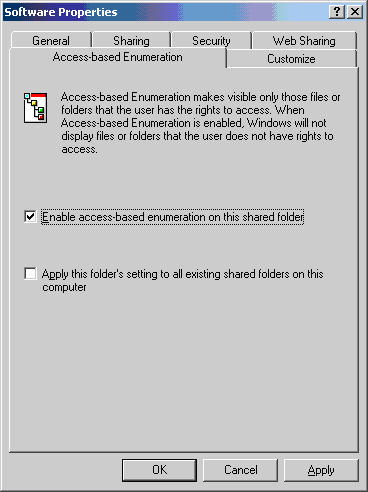Reason #10 - Most Of Your Accomplishments Are Invisible
The computer guy never hears anyone tell him, “I just want to let you know … everything is working fine!”
The reality is that people call the computer guy when something is wrong.
As a computer guy, if you work really hard to make everything work the way that it should, and things work fine, then people believe you don’t do anything. Everything you manage to get working correctly or do perfectly will forever remain unnoticed by computer users. They’ll only ever notice that you do anything when something isn’t working correctly, and you are called upon to fix it.
Reason #9 - Every Conversation You Have Is Roughly The Same
When the computer guy dares to mention what he does for a living, the typical response is, “I have a question about my home computer…”
Or when the computer guy first hears about a widespread problem within the computer network he’s responsible for, he can barely begin to assess the problem before a dozen other people call to report the same problem.
Or when the computer guy explains a certain process on a computer to a user who is incapable of retaining the process, he will inevitably need to reinstruct the user of this same process — indefinitely.
Reason #8 - You’re An Expert Of Bleeding-Edge Technology Products, Aren’t You?
The computer guy often finds himself in situations where someone is asking him for advice on a pending investment of the technological variety.
“I heard about (some hardware or software product) that can do (something desirable) for me. I brought you these (advertisements/reviews/printouts) because I wanted your recommendation. Which would you buy?”
Although the inquiring person sincerely trusts the computer guy’s judgment over their own, in almost every instance the real objective of these meetings is to ensure their own immunity from making a risky purchase.
If it turns out to be a bad investment, and they cannot get (the hardware or software product) to do (anything desirable), then you will be their personal scapegoat — “But honey, the computer guy said I should buy it!”
Reason #7 - Your Talents Are Forcibly Undervalued
Thanks to the constantly declining price of new computers, the computer guy cannot charge labor sums without a dispute. If he asks to be paid what he is worth, he will likely be met with the “why not buy new?” argument.
That is, desktop computers are always getting smaller, faster, and cheaper. It’s possible to purchase a new desktop computer for under $400. If the computer guy spends five hours fixing a computer and wants $100/hour for his time, his customer will be outraged, exclaiming “I didn’t even spend this much to BUY the computer, why should I pay this much just to FIX it?”
Reason #6 - You’re Never Allowed A Moment’s Peace
The computer guy is so prone to interruption that he rarely finds an opportunity to work on his own problems. This is because:
Computers never sleep.
Computer problems aren’t scheduled.
Every problem takes time to diagnose.
The computer guy can only give one problem his full attention.
Each user believes their problem deserves attention now.
Consequently, the computer guy has a 24/7 obligation to keep critical computer systems running, while simultaneously juggling everyone’s problems. He’ll often need to forfeit any opportunities to tend to his own needs for the sake of others — because at any moment, of any day, he can be interrupted by someone who wants to make their problem his problem.
Reason #5 - People Ask You To Perform Miracles
The computer guy is often mistaken for someone who possesses the combined skills of an old priest and a young priest. I’ll sum this up easily by example:
“No, I really can’t recover any files from your thumb drive, even if you did find it after it passed through your dog.”
Reason #4 - Your Assumed “All-Knowing” Status Sets You Up To Let People Down
There is no common understanding that there are smaller divisions within the computer industry, and that the computer guy cannot be an expert in all areas. What makes things worse, is when the computer guy attempts to explain this to someone asking for help, the person will often believe that the computer guy is withholding the desired knowledge to avoid having to help.
This is somewhat related to the next reason:
Reason #3 - You Possess Unlimited Responsibility
The computer guy is expected to solve problems. It is difficult to determine the boundaries of that expectation.
Some of the oddest things that I’ve been asked to do include:
Use pirated software to undelete important company files.
Create an Intranet, after explaining I didn’t know how to.
Teach someone how to hide their pornography collection.
Solving problems can range from replacing batteries in a wireless keyboard to investigating why the entire building loses power at the same time every morning. Resolutions can necessitate weaving a 50-foot cable through a drop ceiling, or wriggling under a house on your belly to add an electrical outlet.
Reasons #4 and #3 boil down to this: no matter how often you want to play the role of a hero, there will always be circumstances that test the limits of your ability to be one. It’s difficult to judge when helping someone means doing something immoral, and it’s even harder to admit you are unable to solve someone’s problem — and chances are, that someone will view you as incompetent because you were unable to help them.
Reason #2 - A Life Of Alienation
People only talk to the computer guy when they need him to fix something. Also, when the computer guy approaches a user, they’ll hop up out of their chair under the presumption that he’s there to fix something — as if it would never be expected that he only wants to strike up a conversation.
The fact that the computer guy never gets a moment’s peace can also practically force him to withdraw into solitude. His co-workers don’t understand that he doesn’t want to hear about their computer problems during his lunch hour — he does that every other hour of the day. That’s why the computer guy eats lunch alone with his door closed, or goes out to eat every day — not because he’s unfriendly, but because he needs to escape the incessant interruptions.
Reason #1 - You Have No Identity
It’s an awful experience when the computer guy shows up at a neighbor’s doorstep with a plate of Christmas cookies, only to have the child who answered the door call out, “Mom, the computer guy is here!” He begs for an identity that is not directly associated with computers, but “the computer guy” label walks ahead of him — it simply cannot be avoided. I was given a name and I’d love to be addressed by it.
Having read these reasons, you may believe that I’m complaining. It’s true that I was upset with many aspects of my life as the computer guy, but I’m past the point of complaining.
I took a good hard look at my existence and realized that things were not likely to change in the line of work I had chosen. Instead of just complaining, I took action and began making positive changes in my life.
Working in the computer industry isn’t for everybody. It wasn’t for me. I’ve compiled my reasons for putting it behind me and placed them here, so that anyone who is unsatisfied with their life working in computers might recognize it’s not for them either.















